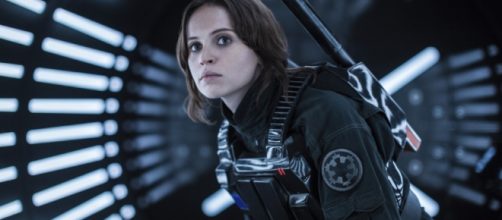Warning - the second half of this review contains spoilers
The latest film off the "Star Wars" conveyor belt brings to life a thrilling story of insurgency, sacrifice, and hope. "Rogue One: A Star Wars Story "takes place in a time before "A New Hope", as we follow Jyn Erso (Felicity Jones), a young rebel whose father (Mads Mikkelsen), is responsible for building the Empires' city-destroying and aptly named Death Star.
Separated from her father as a child and unsure of his culpability, Jyn is sent by the Alliance to track him down and find out more about this mysterious weapon.
She is joined by Cassian Andor (Diego Luna), who has been fighting the Alliance cause from the age of six, and his robotic partner K-2SO, who provides the C3PO-esque comic relief.
Cassian and Jyn's relationship is one of mistrust, but they are bound together by their mutual desire to bring an end to the tyrannical rule of an Empire that has torn apart their lives since childhood.
In an eccentric galaxy of characters, Jones gives a transformative performance that stands out as one of the best in "Star Wars" history. She doesn't need to dominate screen time, as every movement is thoughtful and revealing. Jones is aided by director Gareth Edwards, who produces countless iconic images.
"Rogue One" does a fantastic job of populating its story with fresh and engaging characters, including Chirrut Imwe (Donnie Yen) who shines throughout the film.
Stop reading here if you don't want spoilers
One of the film's most effective weapons is its sparing use of Darth Vader. In a year that has seen Suicide Squad miserably attempt to shoehorn the Joker into its narrative, "Rogue One" holds Vader back for one of the most spine-tingling scenes in Star Wars history.
Vader's final appearance arrives like a wrecking ball, with a sense of excitement that soon makes way for sheer terror. He is handled with a style and intensity that conjures the essence of The Empire Strikes Back - it is simply brilliant.
There is a return for Vader's right-hand man Moff Tarkin, who is eerily played by a CGI recreation of the late Peter Cushing. The technology that brings Cushing back to our big screens is remarkable but by no means perfect, and his presence may come as a distraction to some.
For those who can get past it, Tarkin's return adds to the hierarchical menace that helps make the Empire such an imposing force. The tiers of terror are well drawn out in "Rogue One" from Orson Krennic's smarmy politicking to Tarkin's stern ruthlessness; to Vader's inexorable violence.
Even though the history around this film is set, "Rogue One" crafts a narrative that doesn't feel tied down by what comes before or after. This helps the film create meaningful stakes that are given a moving pay-off. One of the closing scenes involving Jyn and Cassian evokes Zak Hilditch's Australian apocalypse film "These Final Hours" (2013); touching on an emotional beat that many Hollywood films of this kind don't dare to.
Take "Captain America: Civil War" for example, whose deceptively soft punch made it more of a playground fight than a war movie.
"Rogue One" is undoubtedly a war film - and an adult one at that. It is hard not to think of "Apocalypse Now" in the third act, as the Vietnam-looking beaches act as a setting for the films skilfully captured final battle sequence.
Edwards does a magnificent job of conveying the chaotic nature of conflict, with the camera seamlessly panning between aerial destruction and bedlam on the ground. The final act of the film is expertly executed by Edwards, whose experience in "Godzilla" (2014) put him in good stead to create this brilliantly scaled battle in the "Star Wars" universe.
Ultimately, "Rogue One" is a captivating introduction to the extended "Star Wars" cinematic galaxy. Its rousing closing scene ends on a note of hope. And after this latest installment, there isn't just hope but a calming reassurance that future Star Wars films are in more than capable hands.
Rating: 4/5

